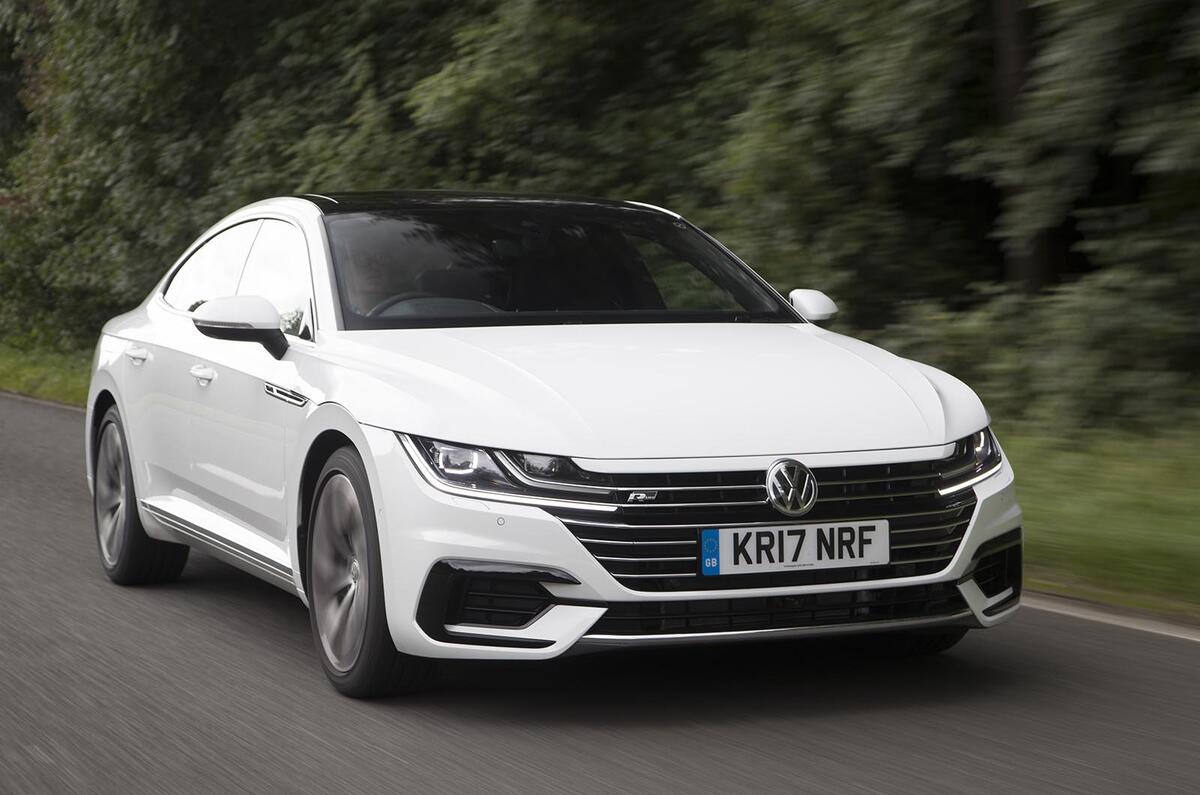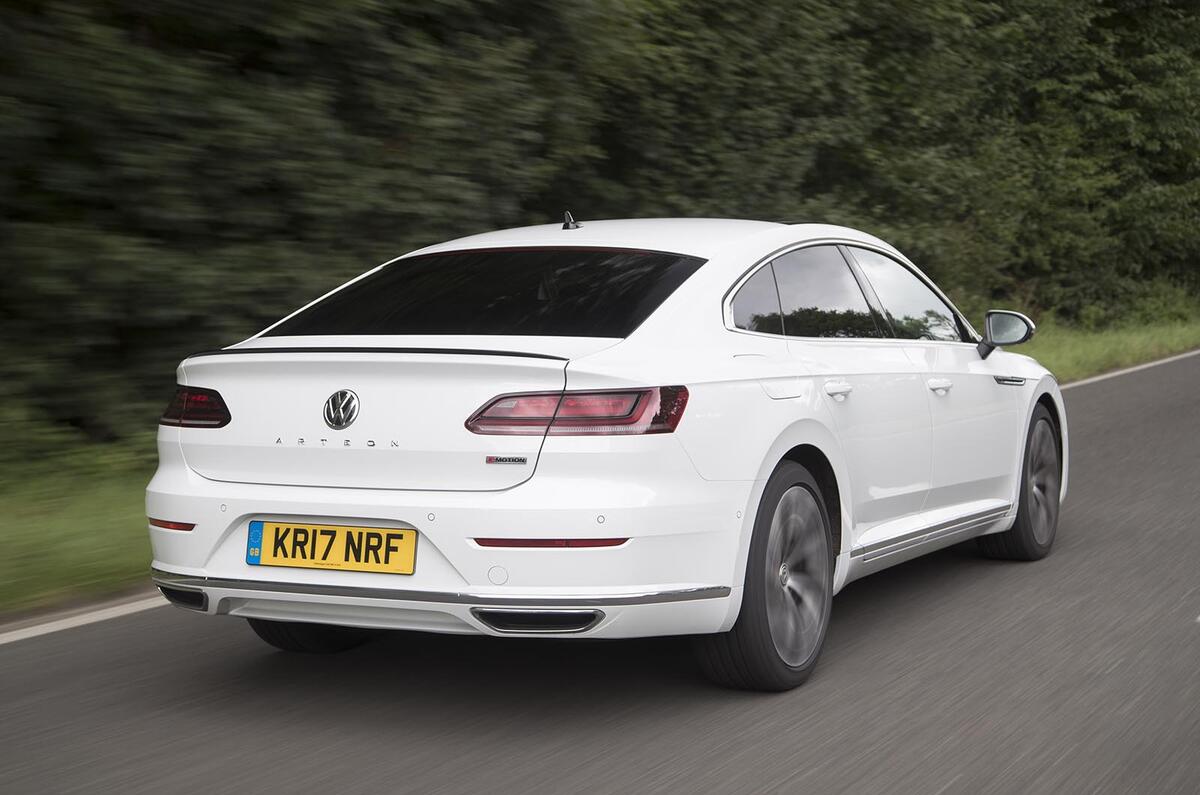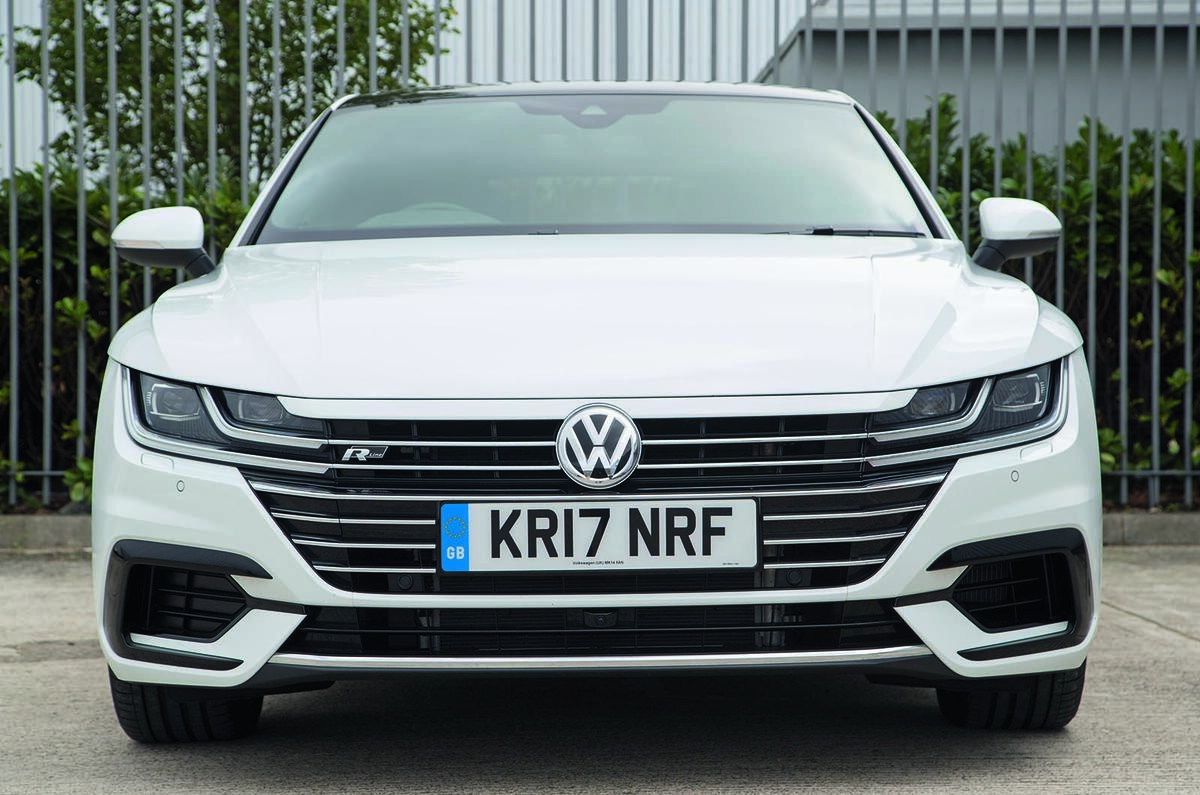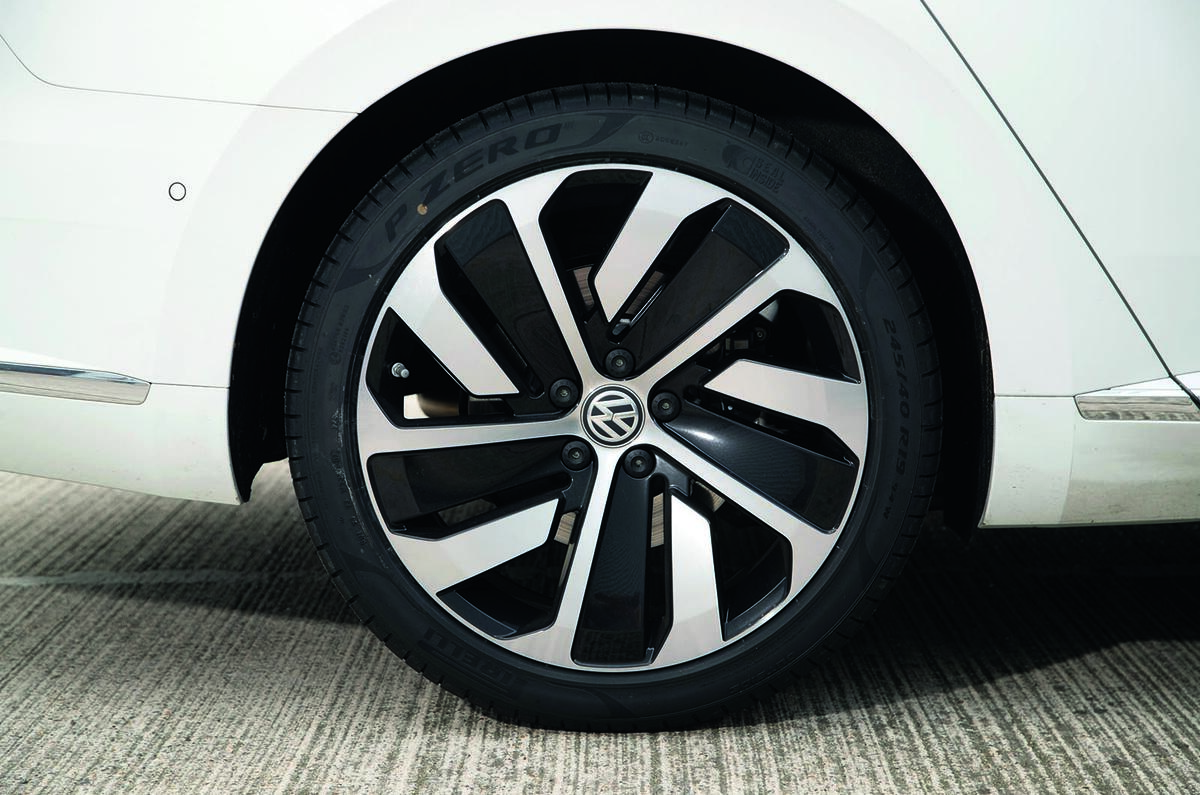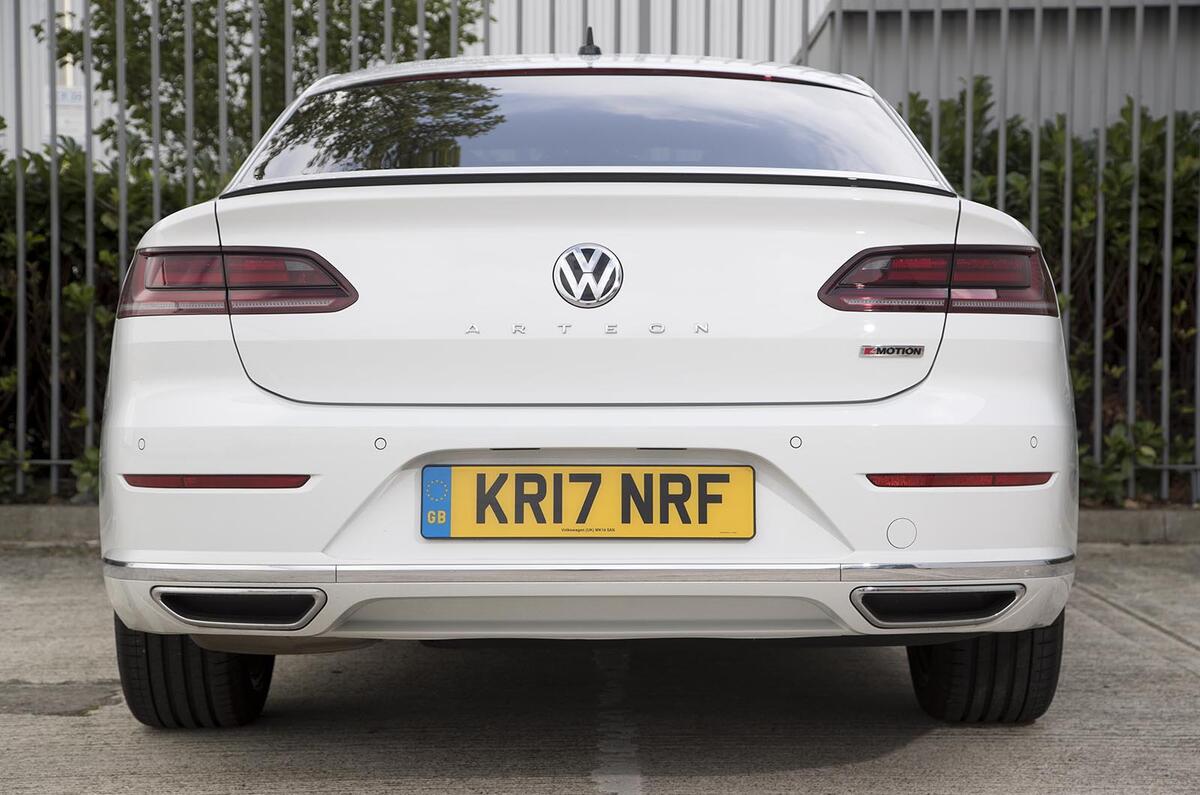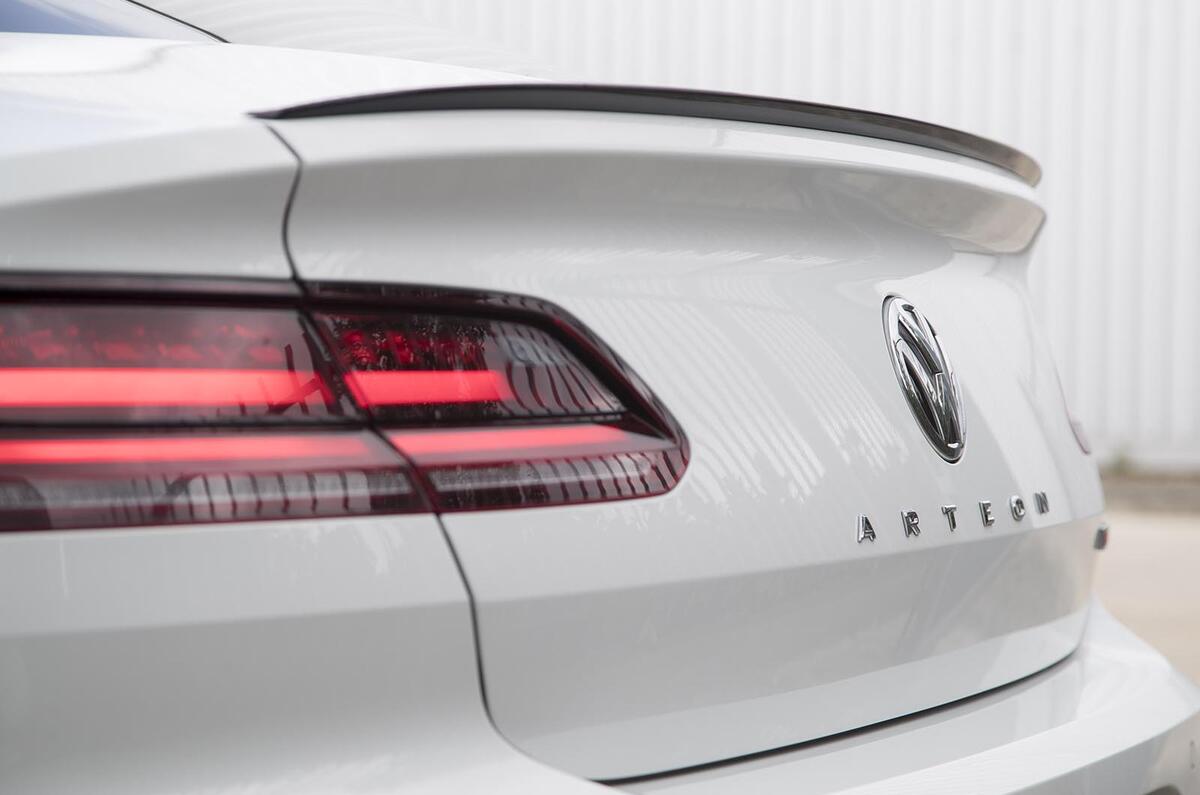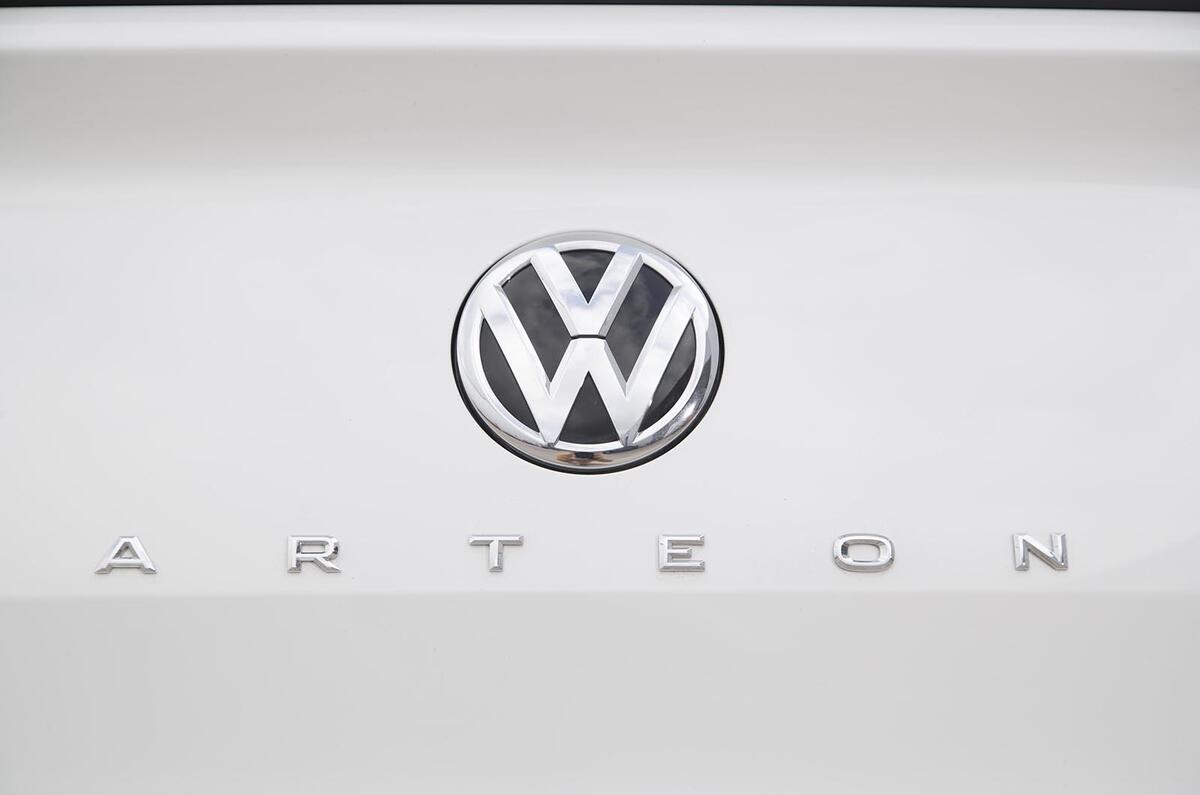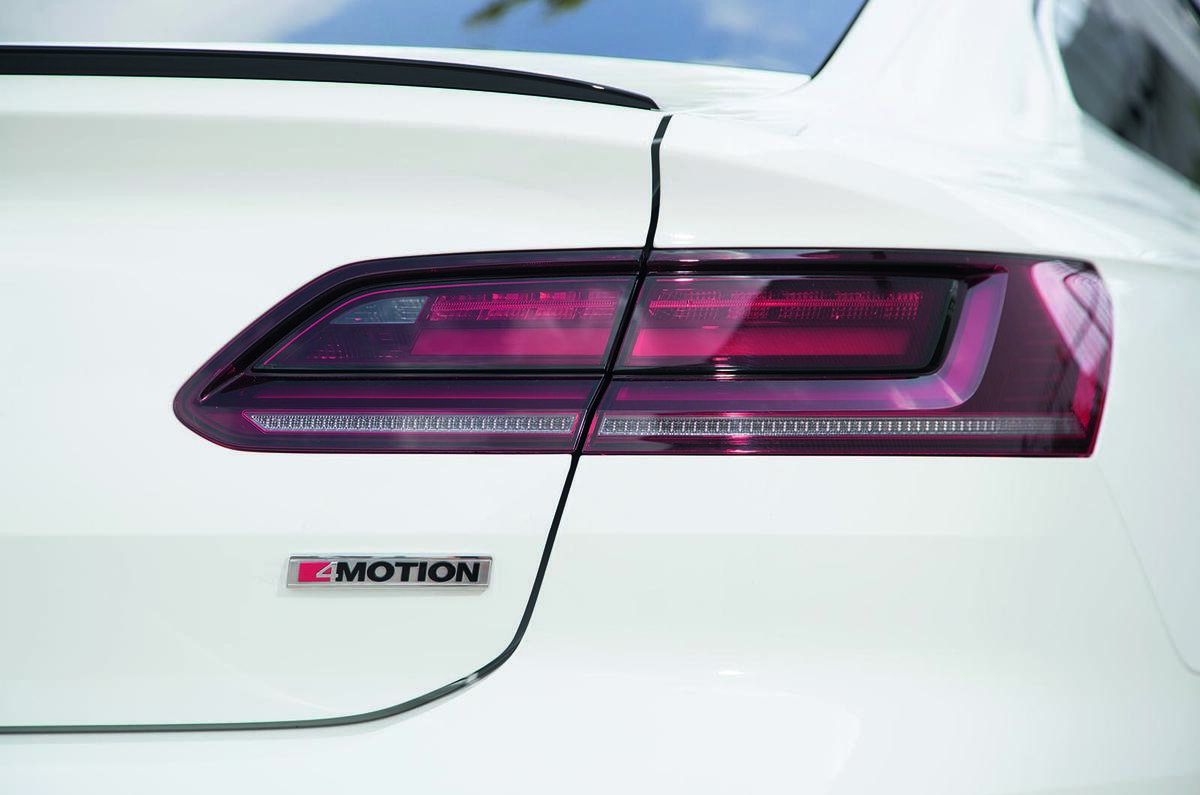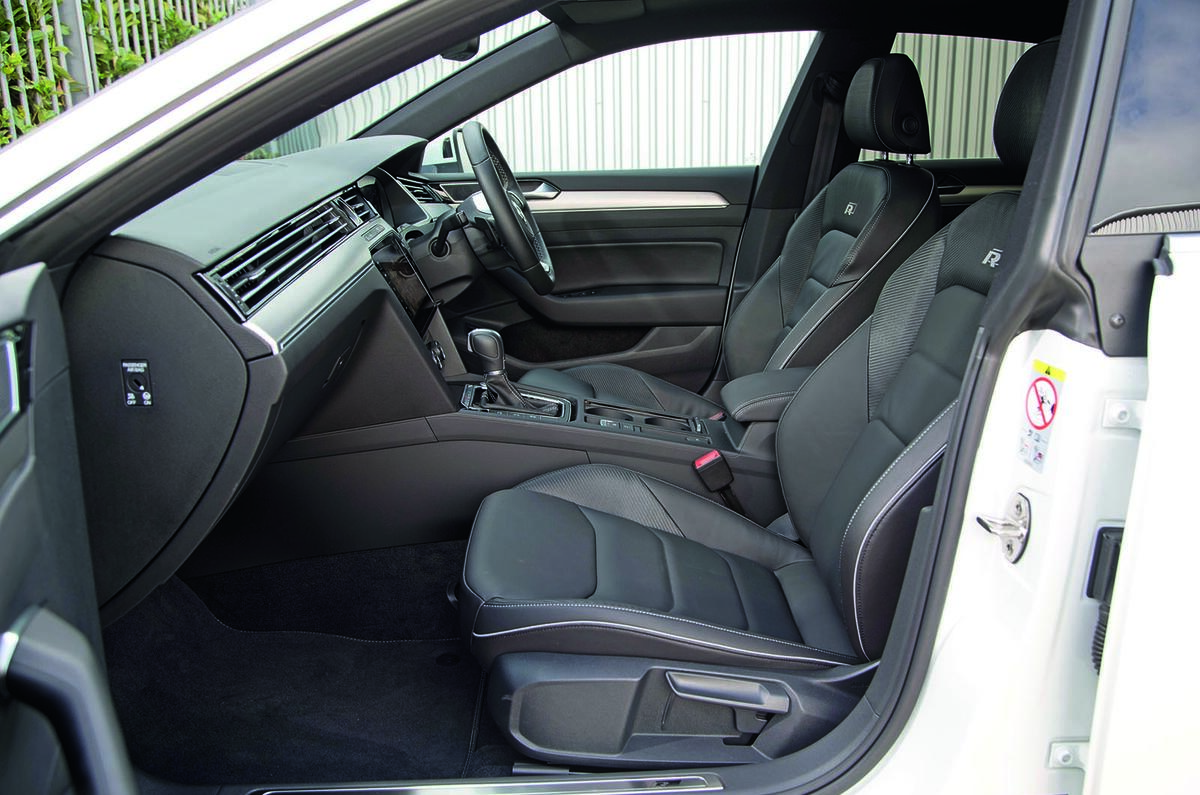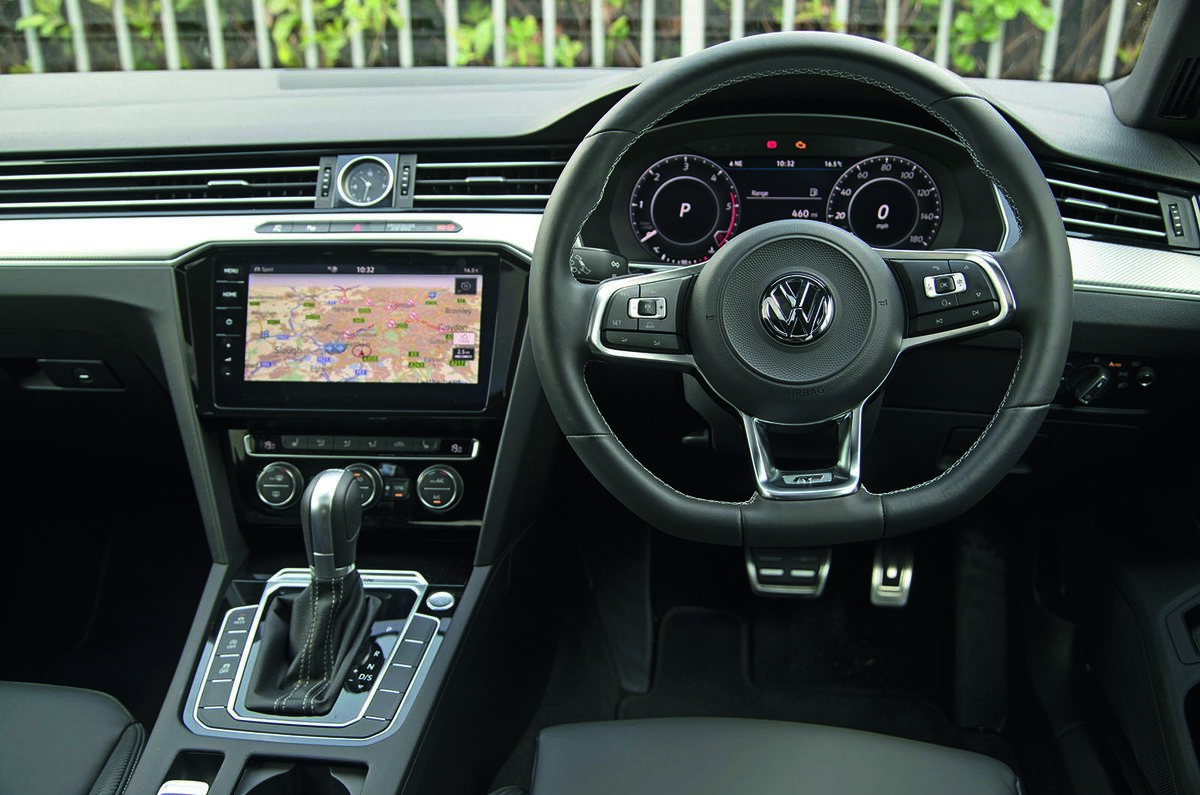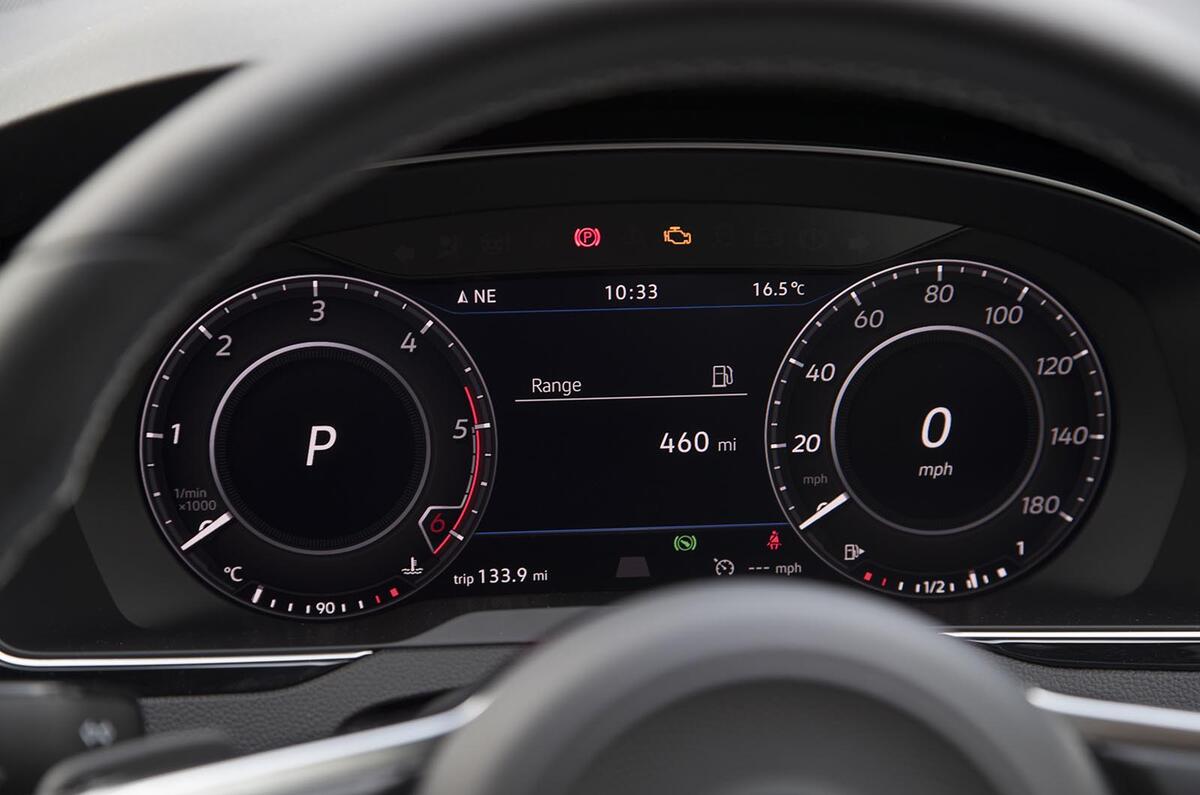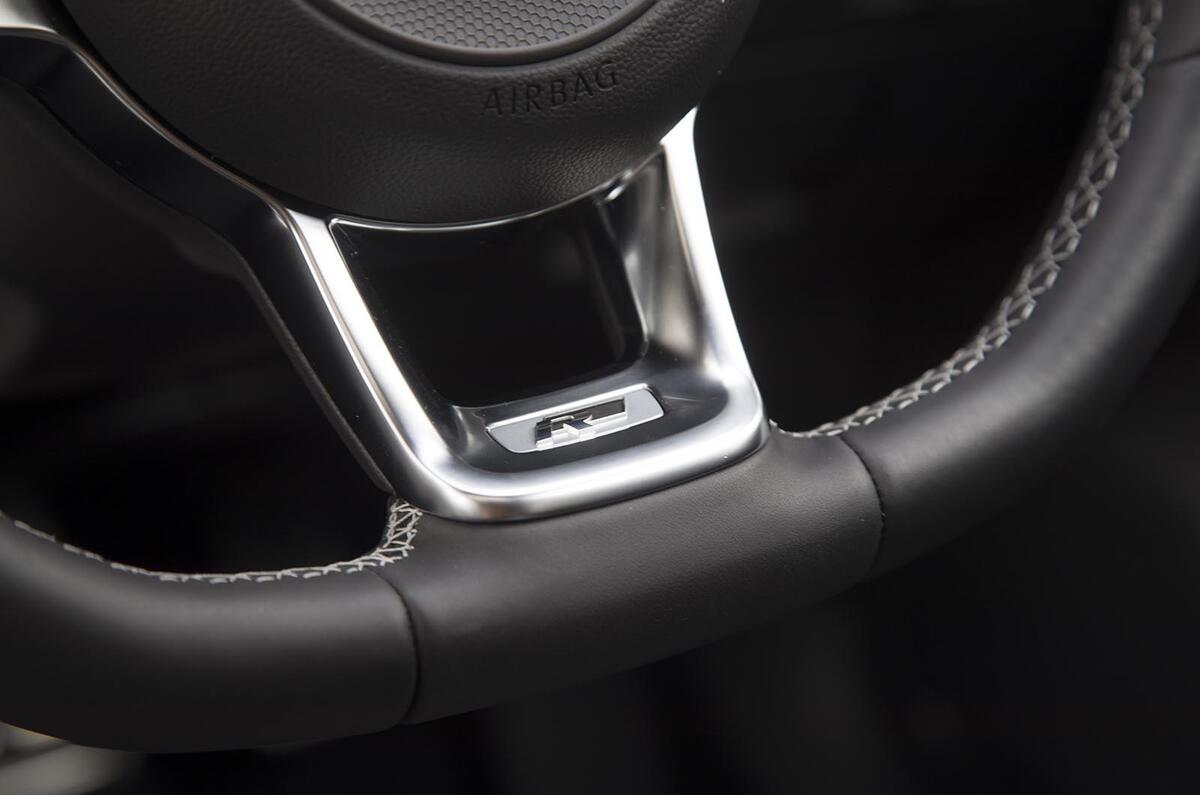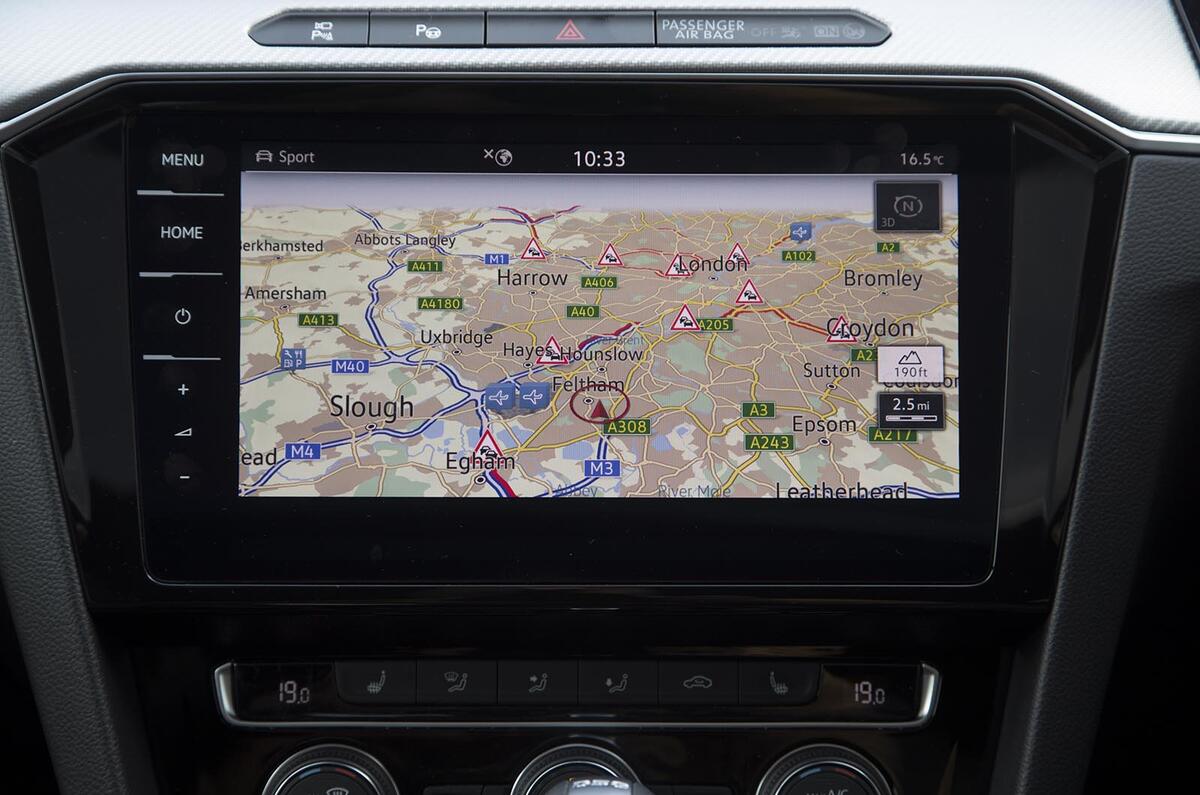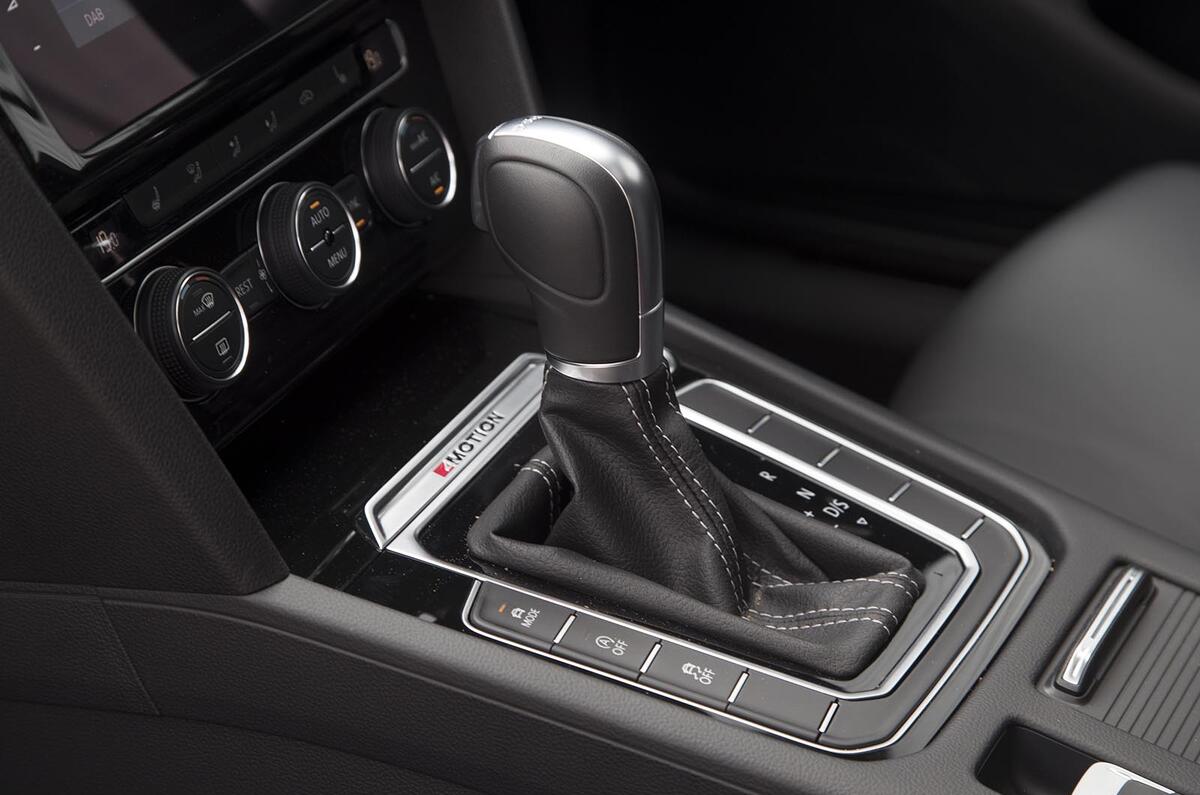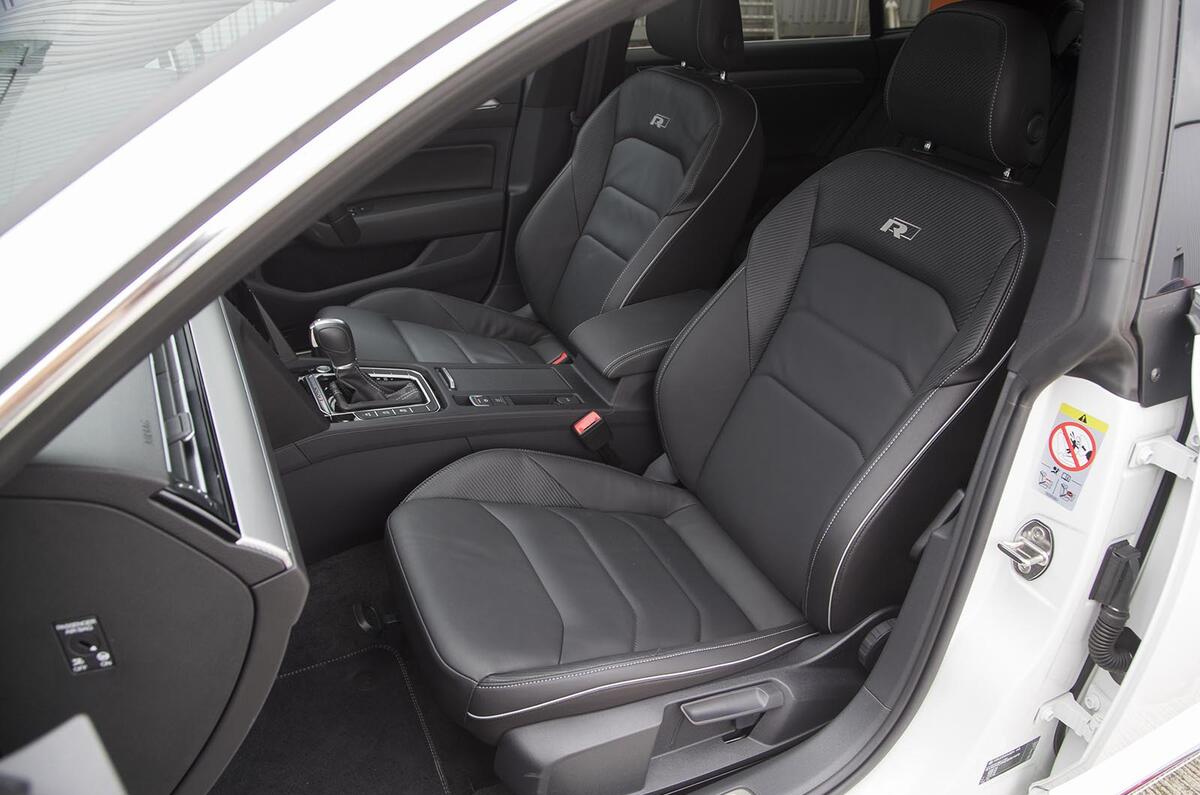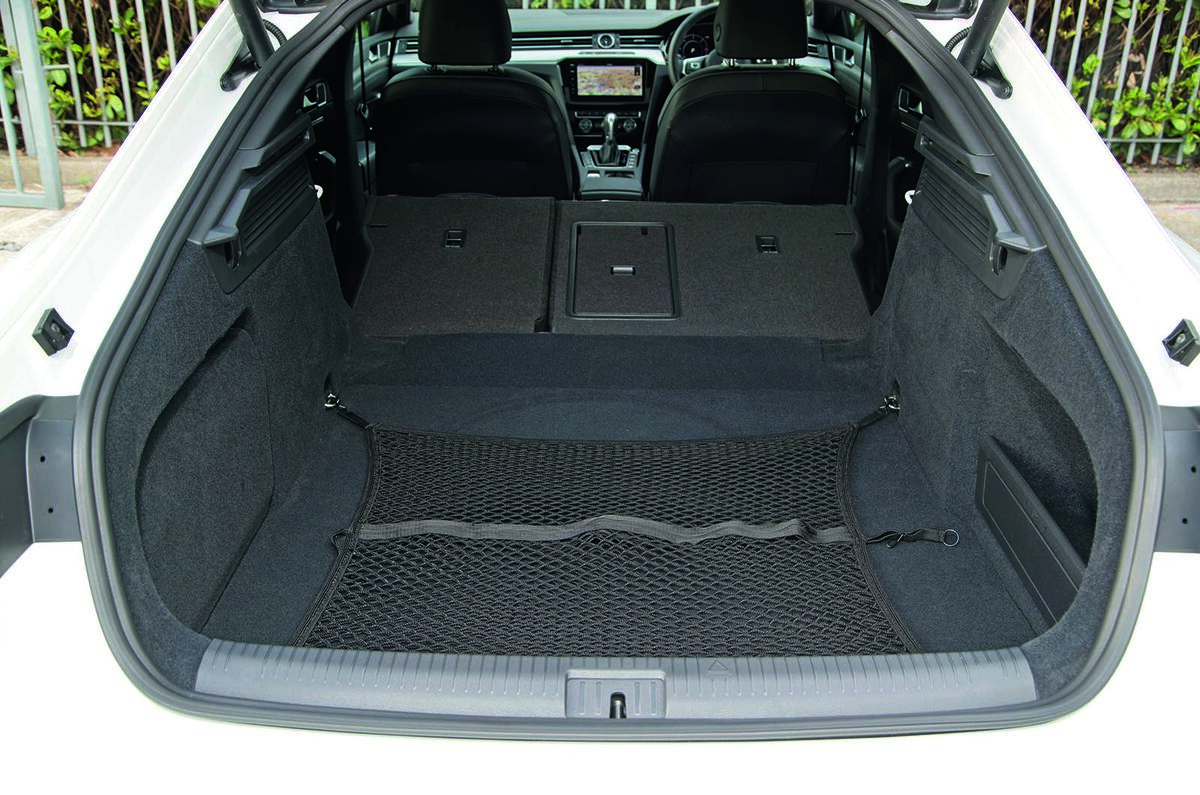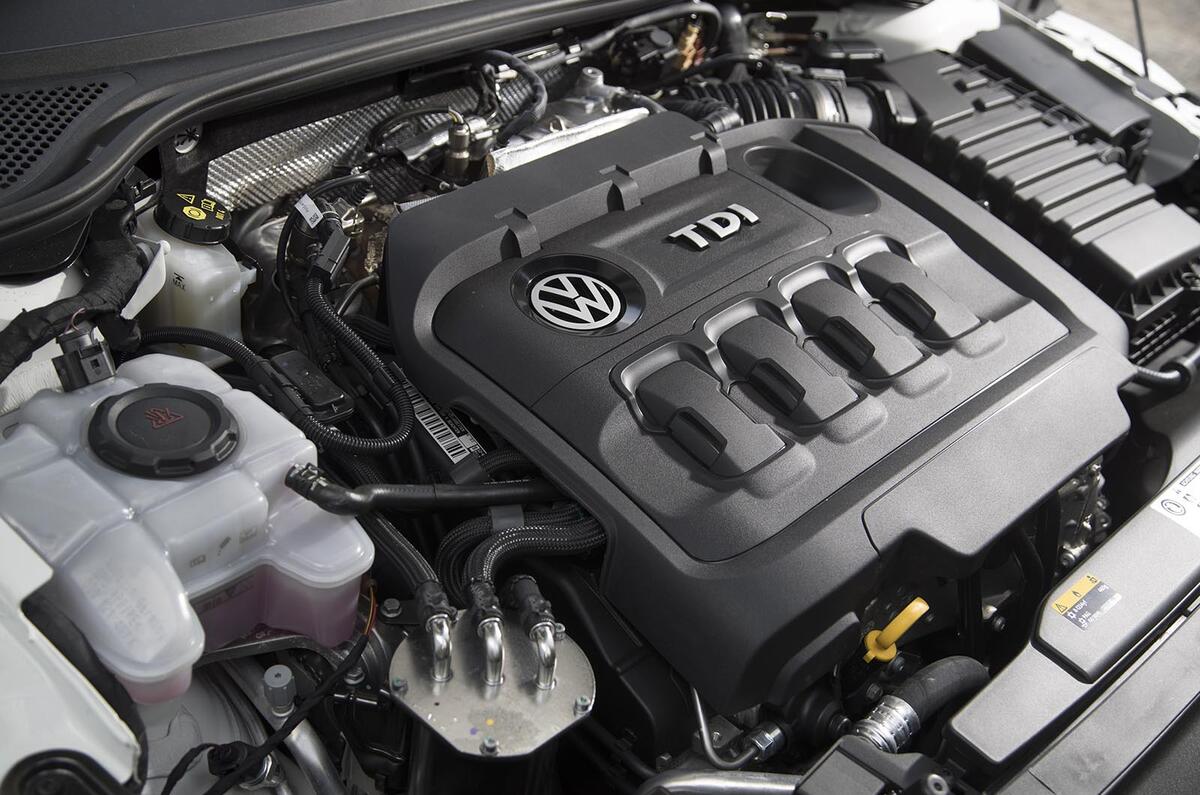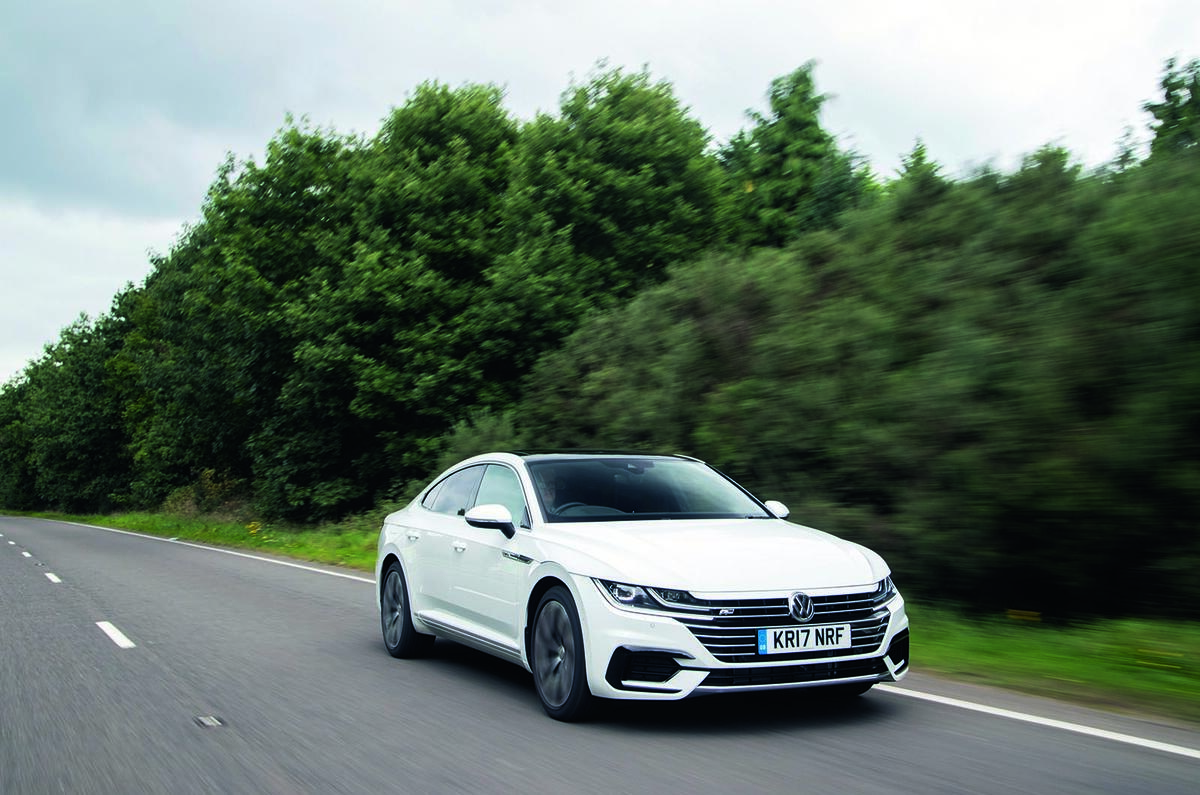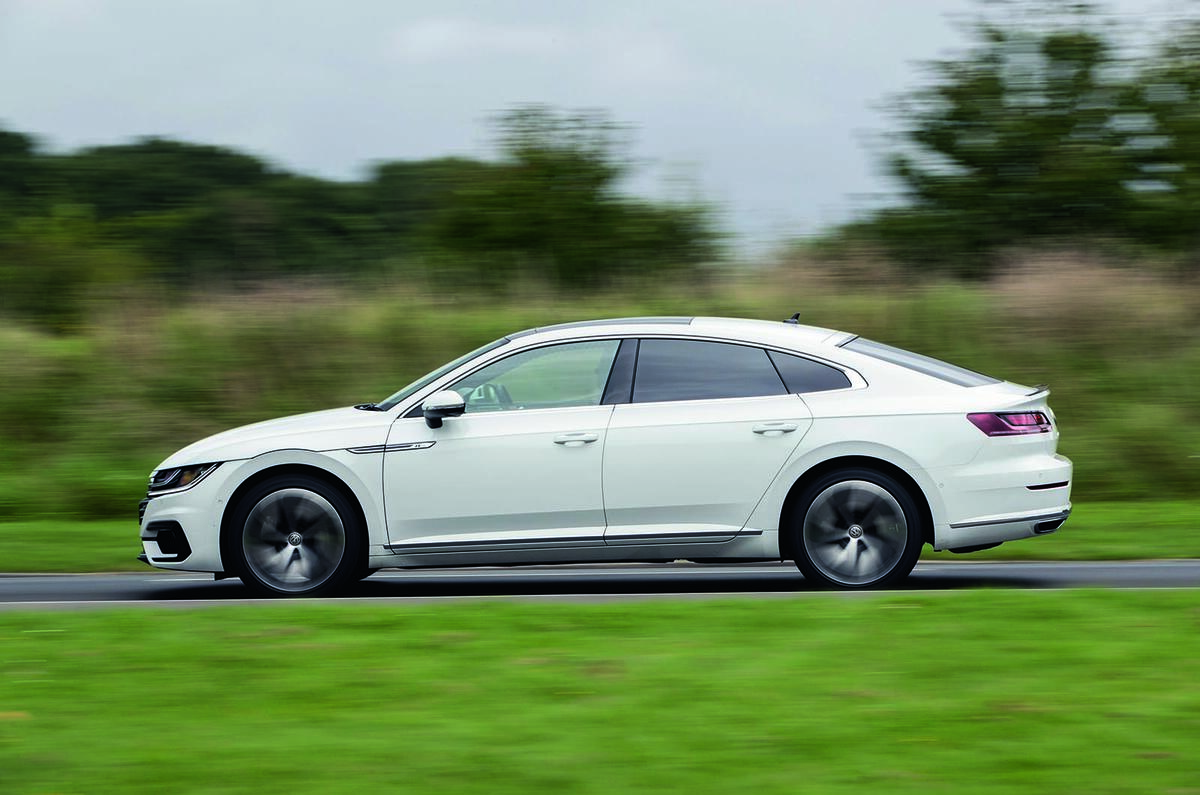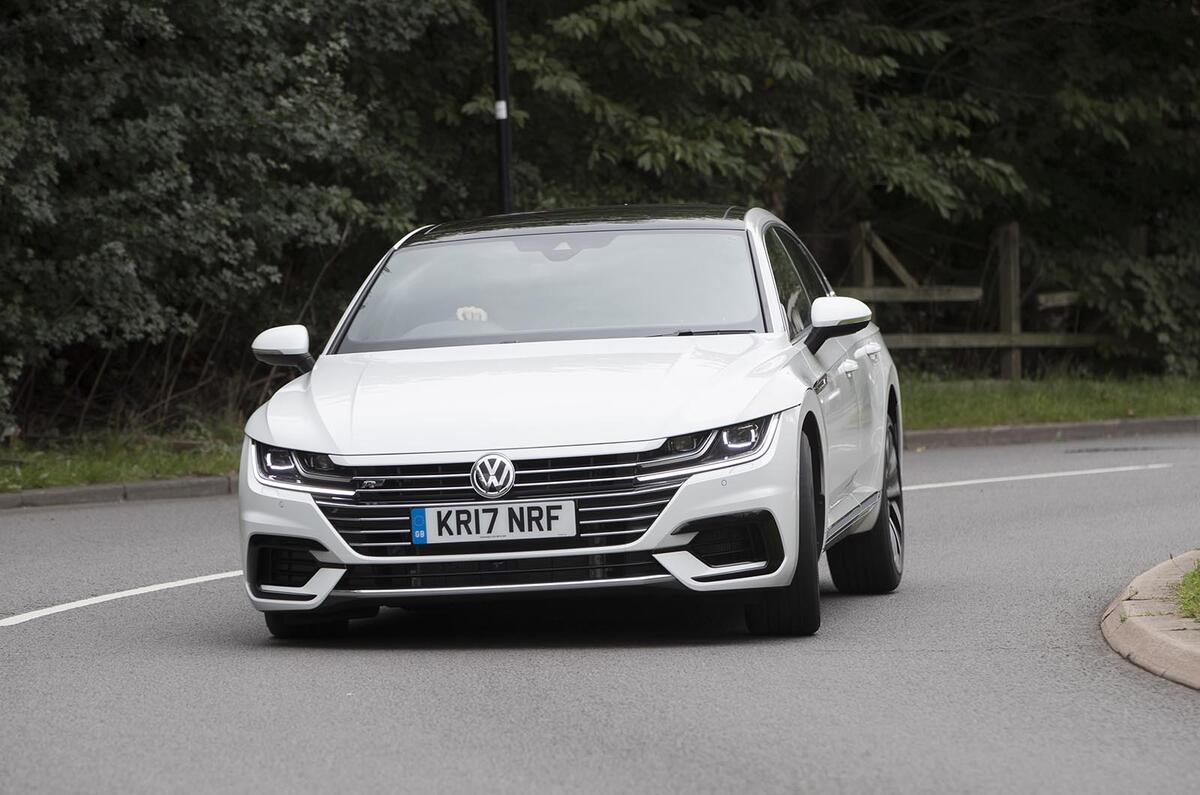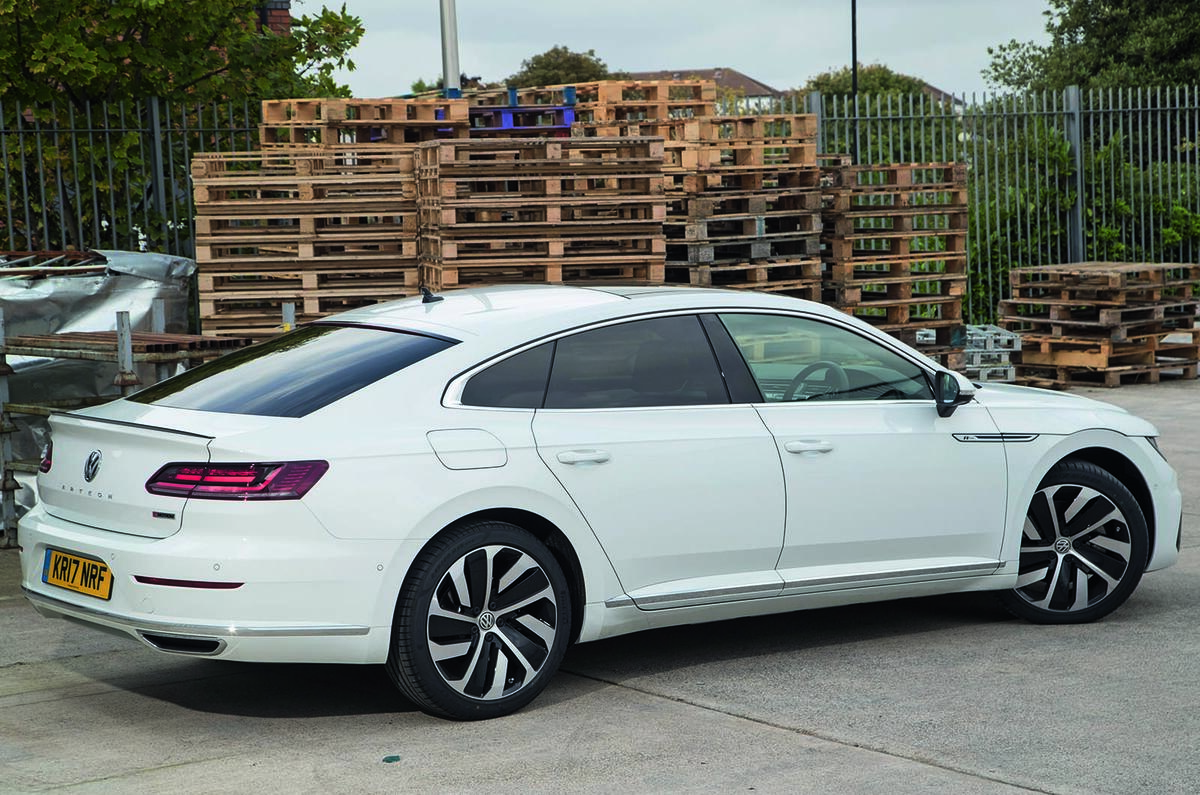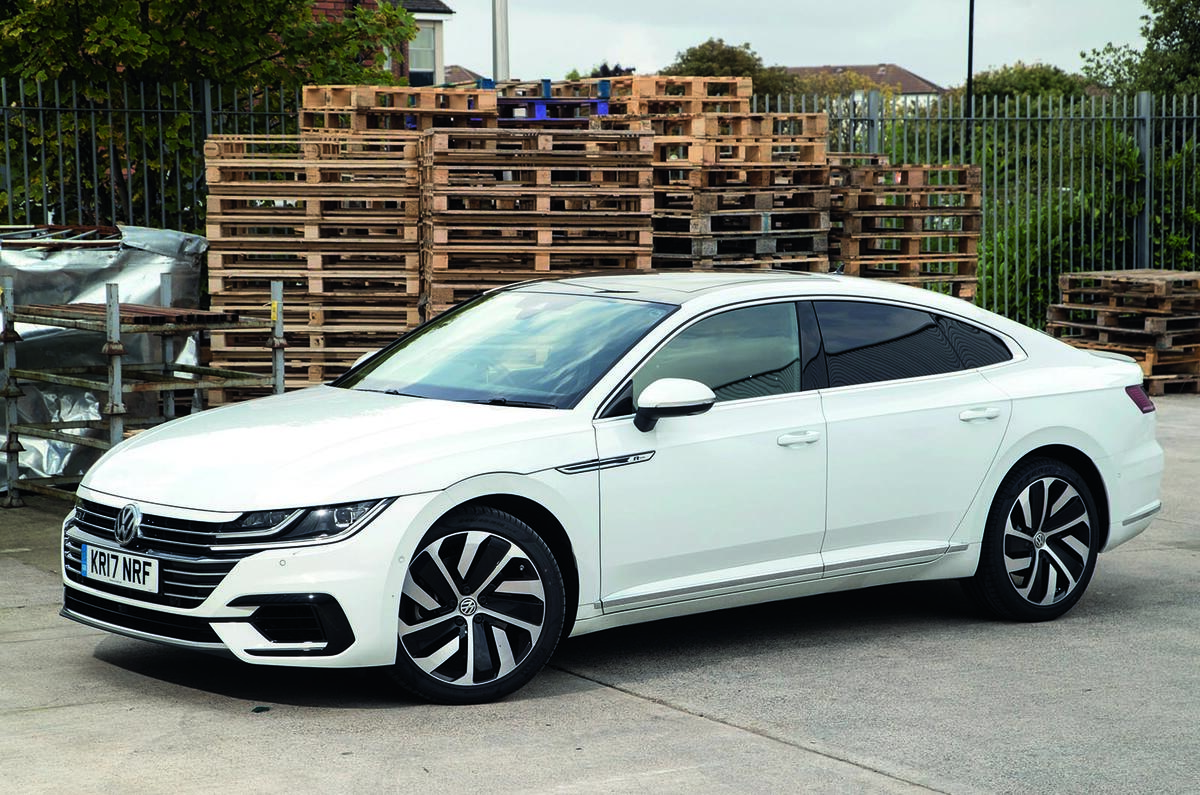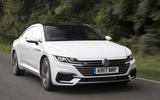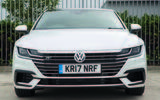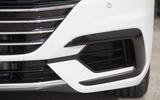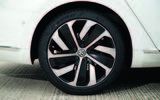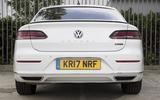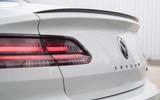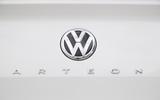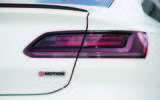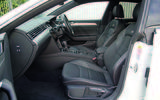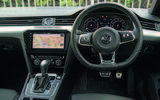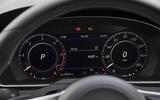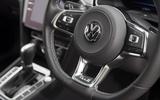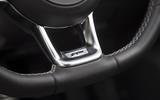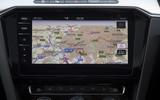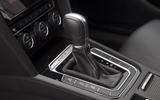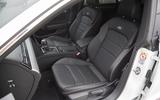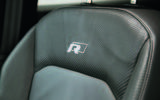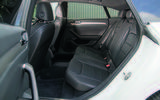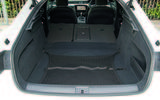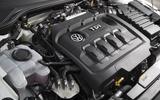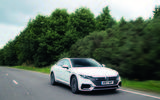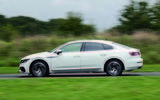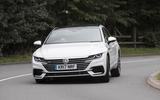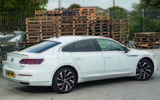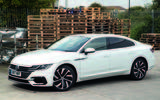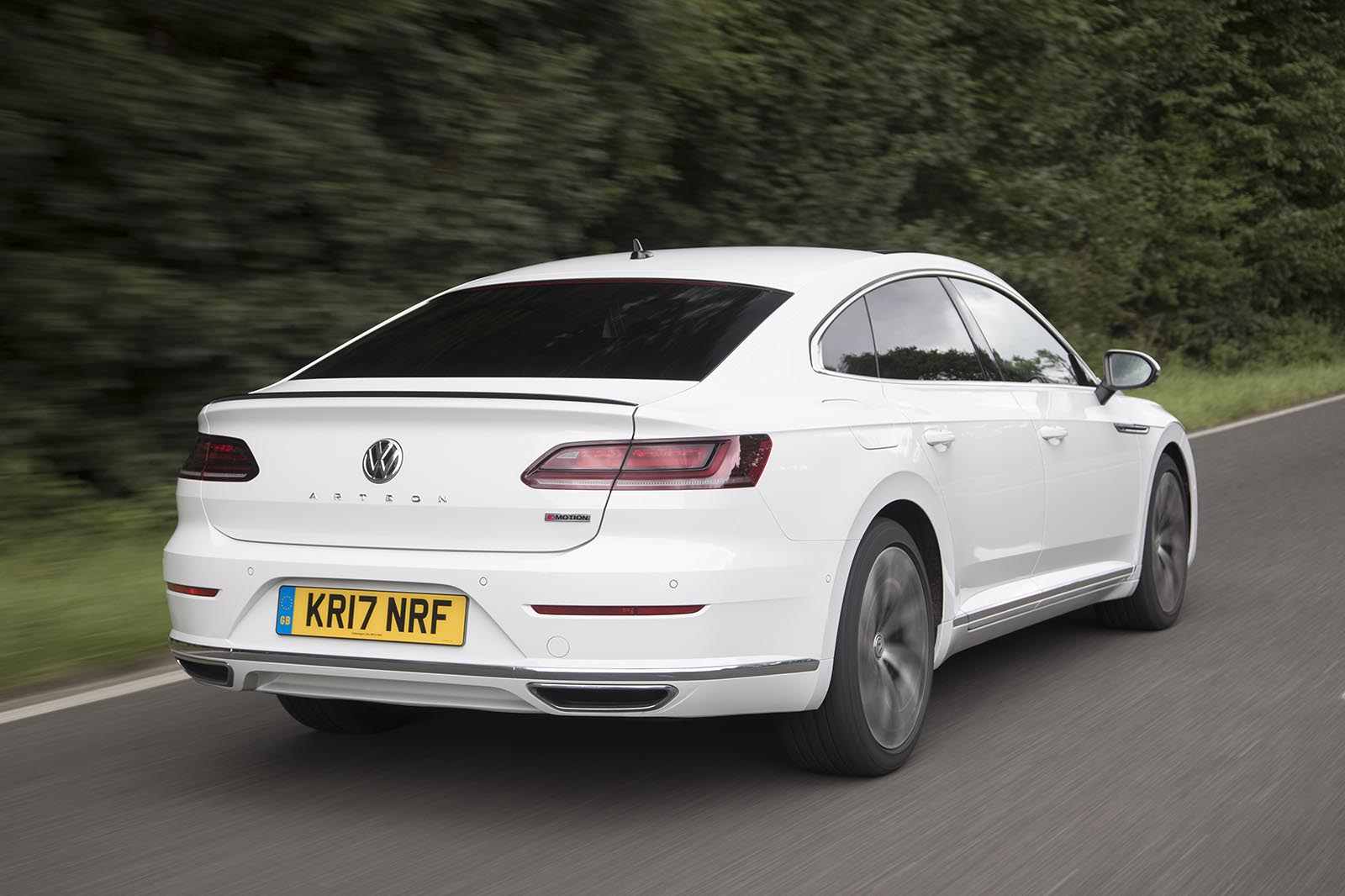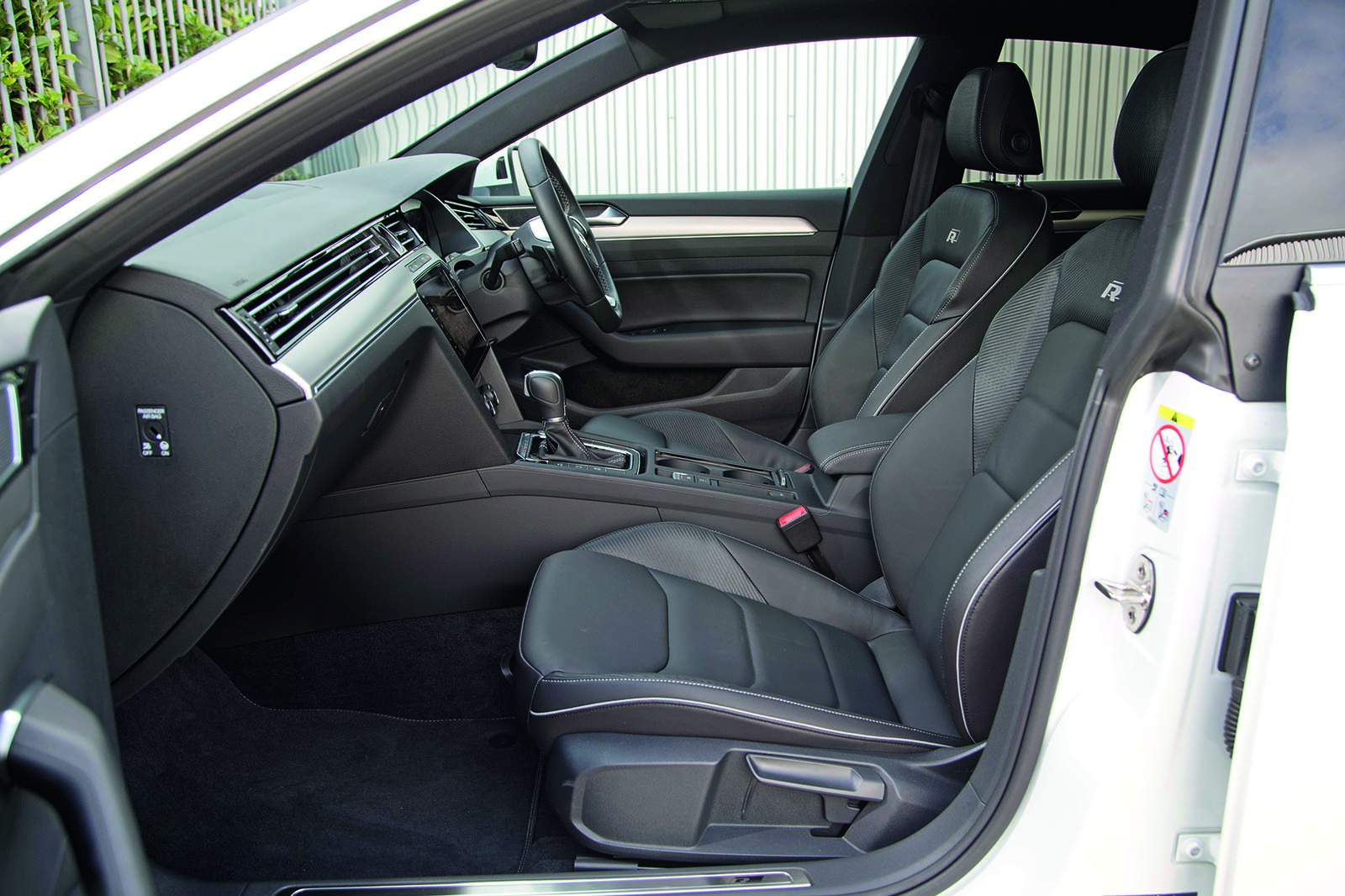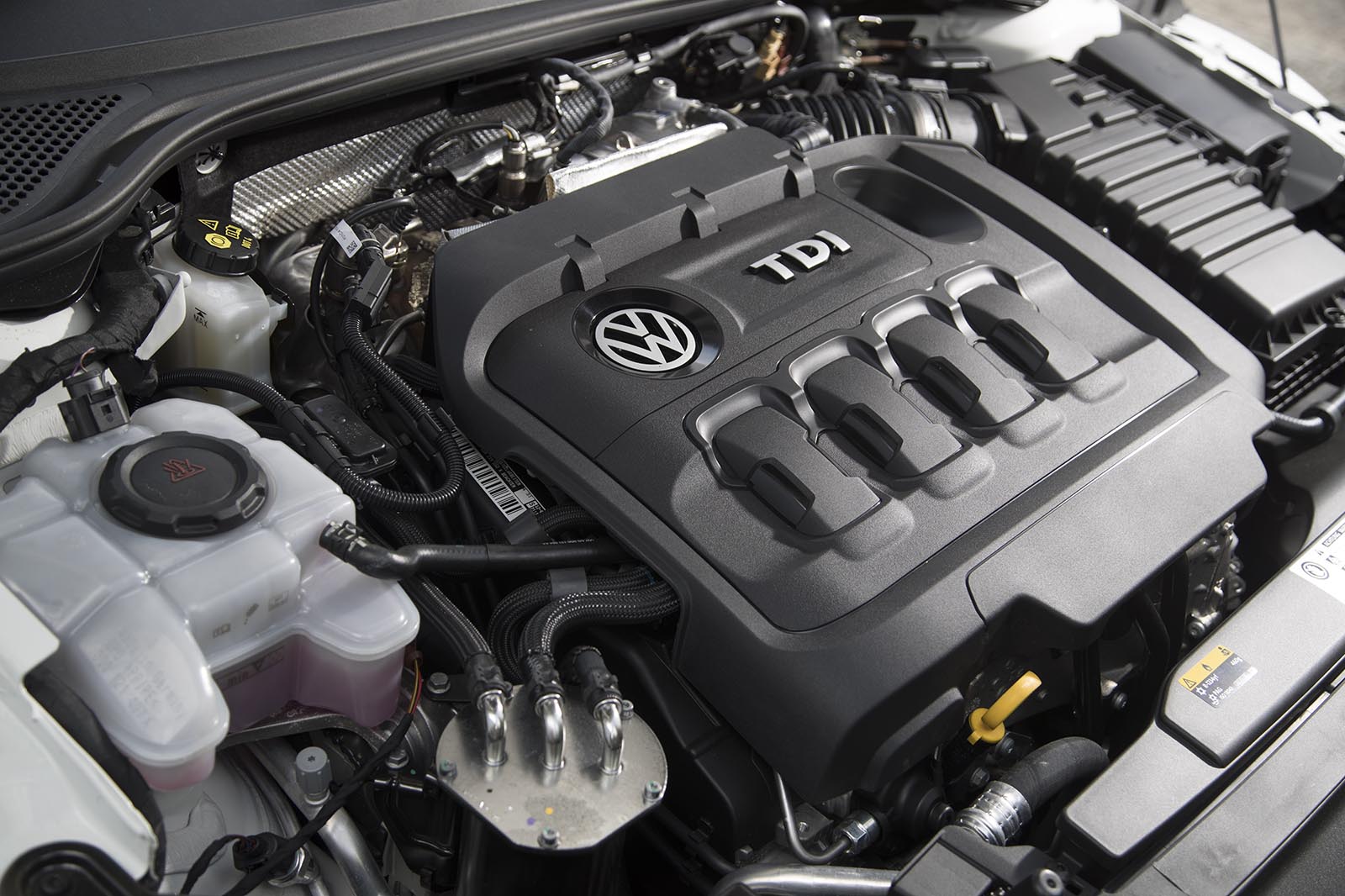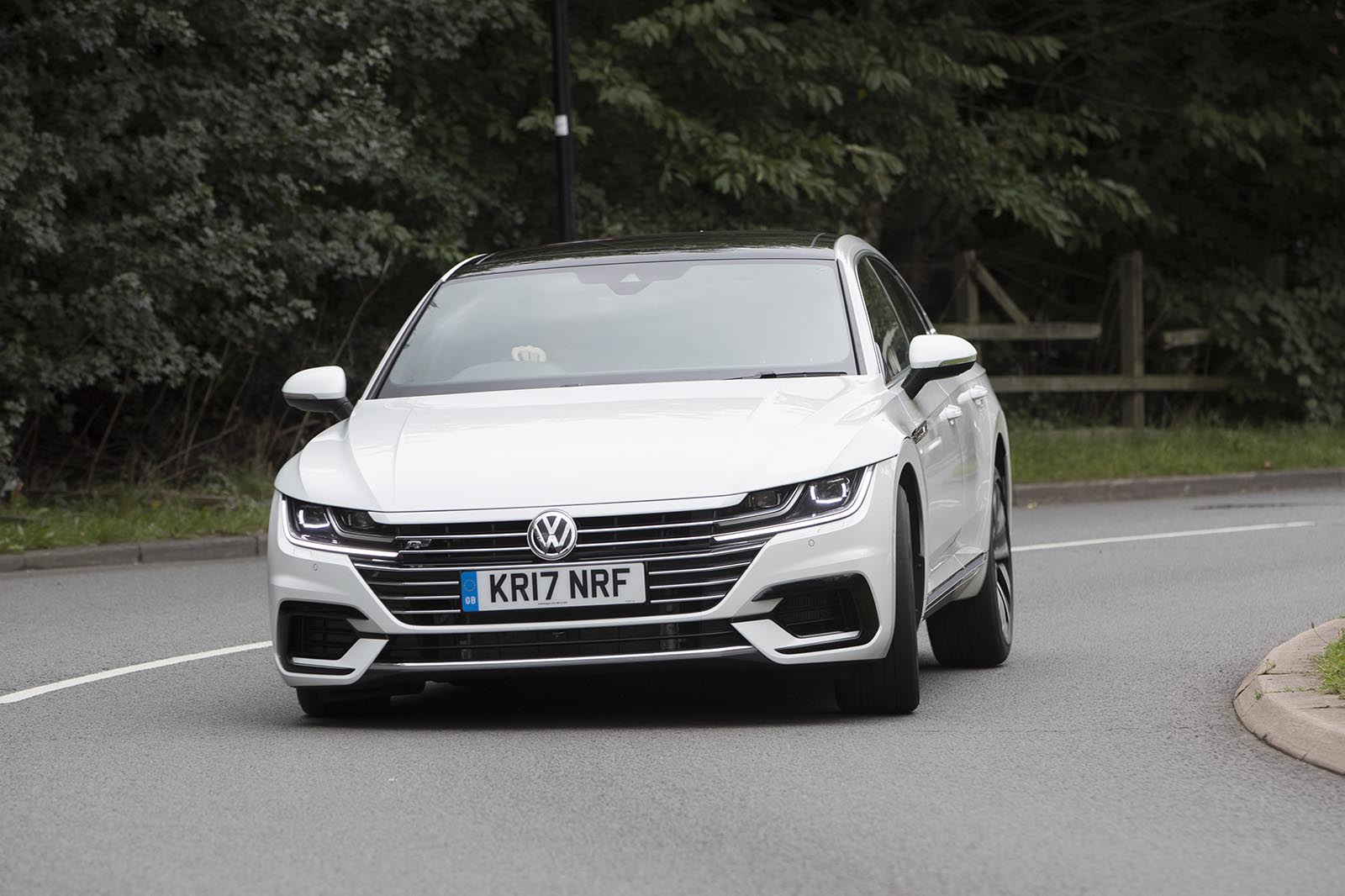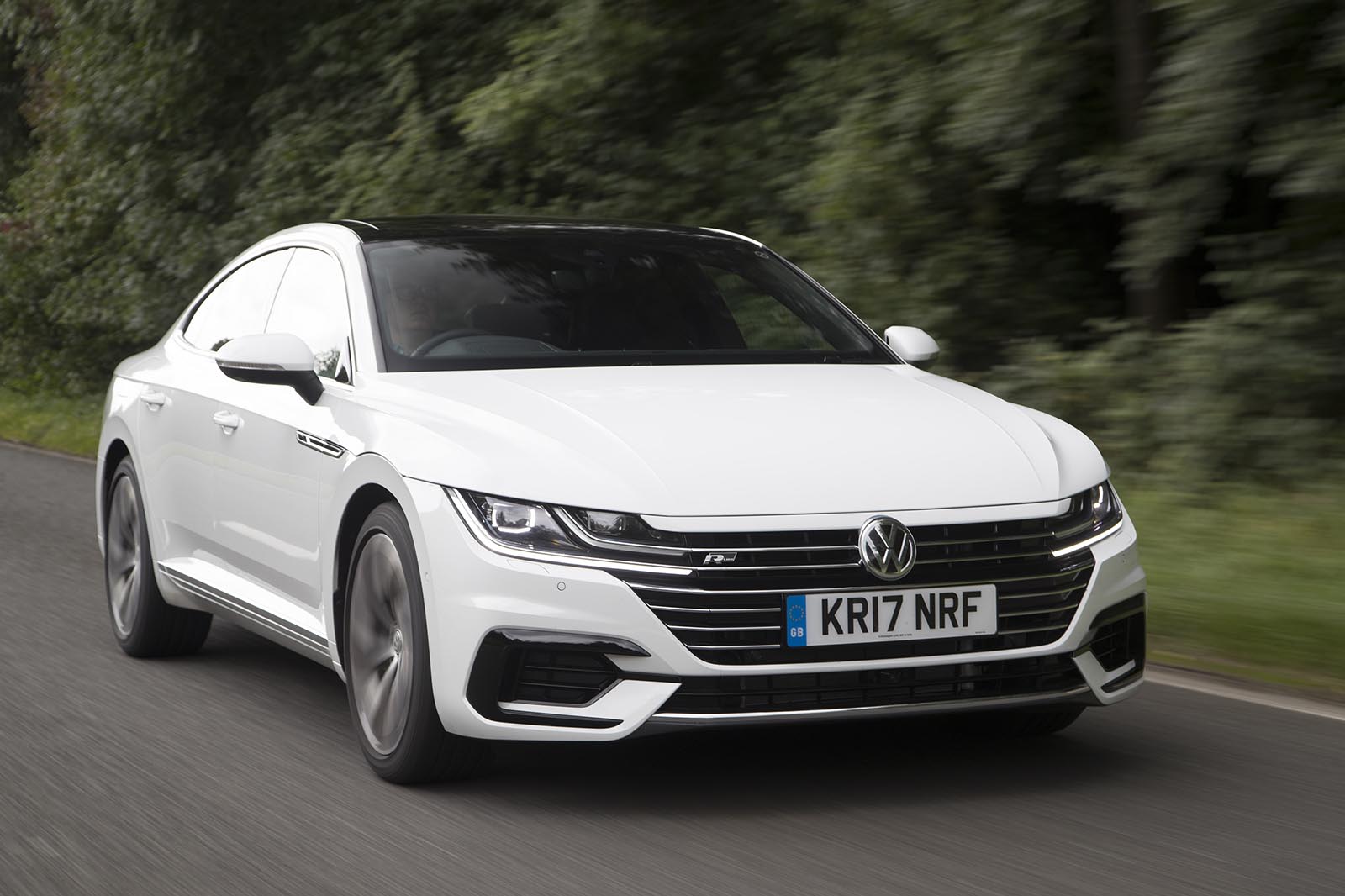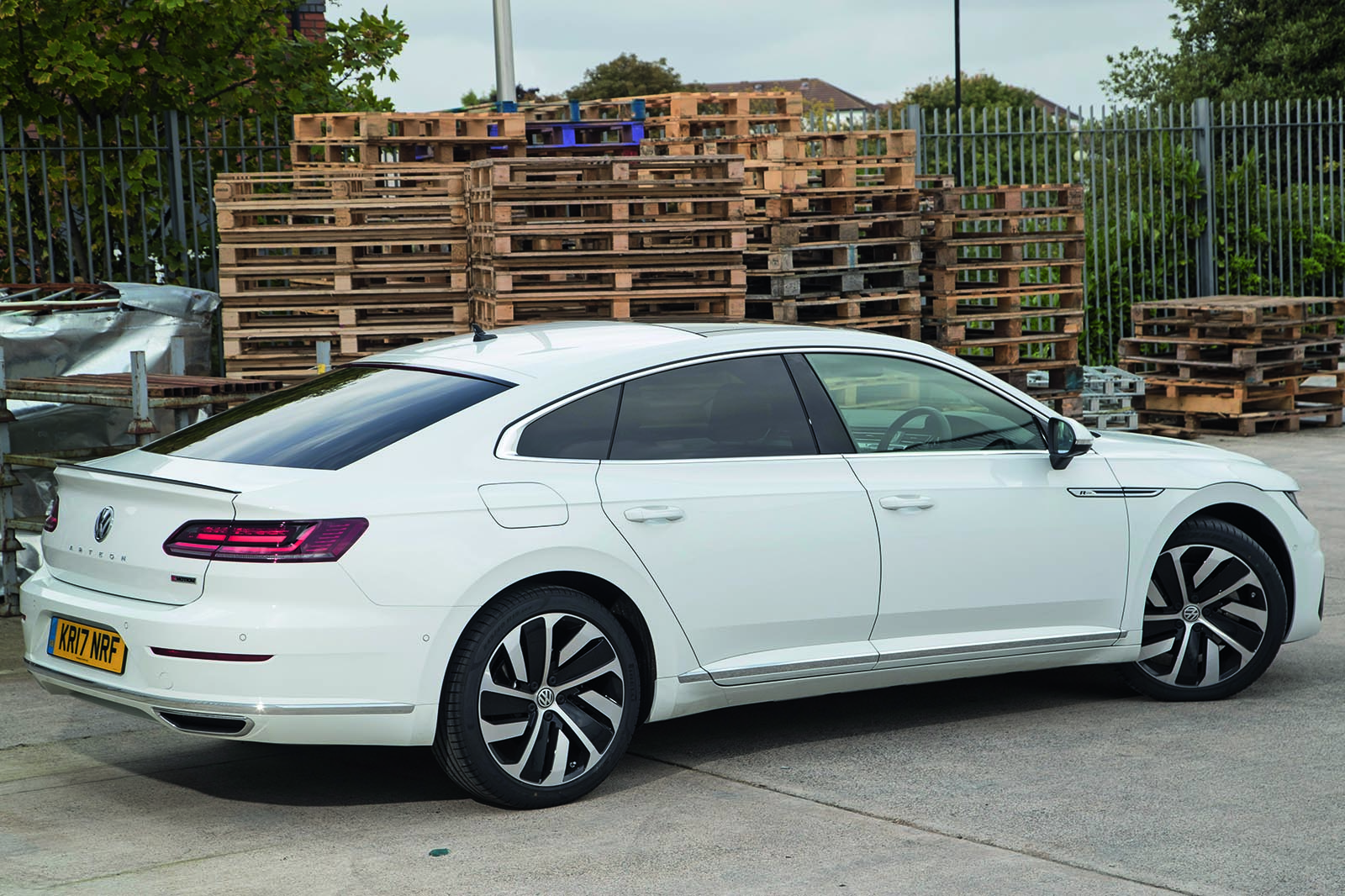Like the square-jawed exterior, the VW Arteon’s interior conjures some initial excitement but it has a fleeting half-life.
It borrows heavily from the current Volkswagen Passat and is a functional space with only a veneer of stylish, expressive form beyond a central air vent that extends the width of the dashboard. Flair? Not here.
Nevertheless, there are reams of Nappa leather, you’ll not get even a sniff of a misaligned panel or a cheap moulded finish, and there’s an abundance of space, particularly in the rear seats, which also offer sweeping visibility thanks to windows that extend deep into the C-pillars.
There’s no shortage of standard equipment, either, including an 8.0in touchscreen, parking sensors at both ends and adaptive cruise control that can use GPS data to adjust for upcoming speed limits.
Predictive cruise control, if you can tolerate it, will adjust the car’s speed to accommodate approaching bends and junctions.
From the driver’s perspective, the fully digital 12.3in instrument binnacle (dubbed Active Info Display and inspired by Audi’s Virtual Cockpit) works extremely well until you need to quickly read your speed when you’ve set the readout to fuel economy, and the optional head-up display (£495) isn’t quite as well defined as that offered by BMW.
The optional, smartphone-esque 9.2in Discover Navigation Pro infotainment system (£895) in our Arteon test car is part of Volkswagen’s new generation of Modular Infotainment System devices.
Its crisp-looking, glass-fronted touchscreen is satisfyingly slick in operation and therefore safer to use than previous iterations, but there are no physical controls to press or twist and marks left on the screen by greasy fingers soon impinge on the high-tech ambience.
Indeed, the absence of a volume or sat-nav zoom dial for quick adjustments on the move can irk — and the recalcitrant gesture control software still isn’t intuitive enough to be favoured by our road testers — but the standard-fit Discover Navigation system, with its 8.0in touchscreen and pair of rotary knobs, provides a remedy.
The ergonomics are every bit as good as we’ve come to expect from cars built on the MQB platform, with plenty of adjustment for the steering wheel and seats.
As such, the car never quite feels its substantial size, although it falters as a proposition for drivers because of a higher driving position than in rivals from the likes of BMW and Jaguar.
VW’s leanings to ‘progressive design’ has undoubtedly hindered the Arteon. Anybody spending the best part of £40,000 on a car like this won’t appreciate being reminded that they’re ensconced within something not so distantly related to a Passat, despite the Arteon’s impressive range of safety technology and connectivity, capaciousness (luggage space is 563 litres with the seats up and an enormous 1557 litres seats down) and rock-solid build quality.


